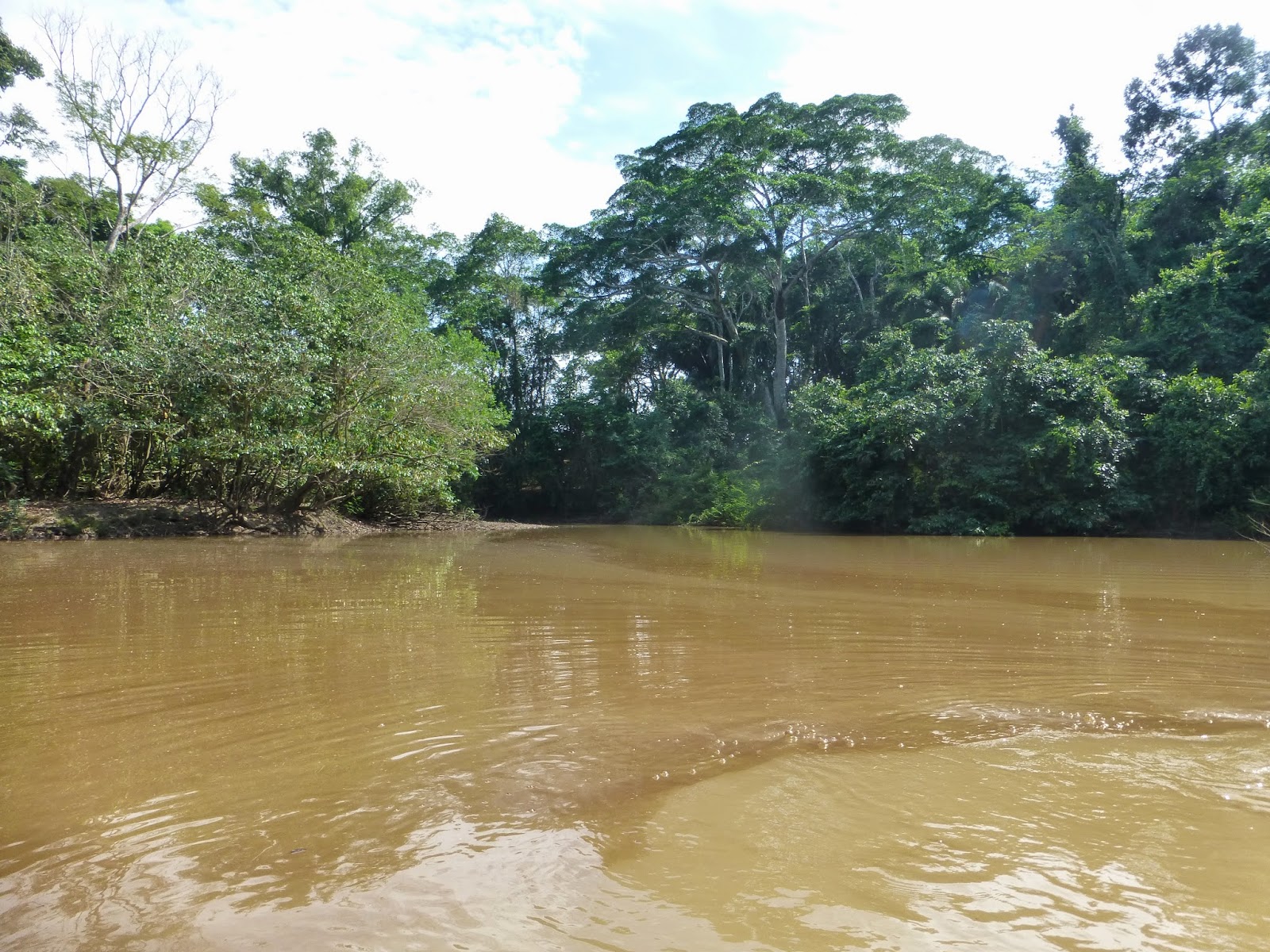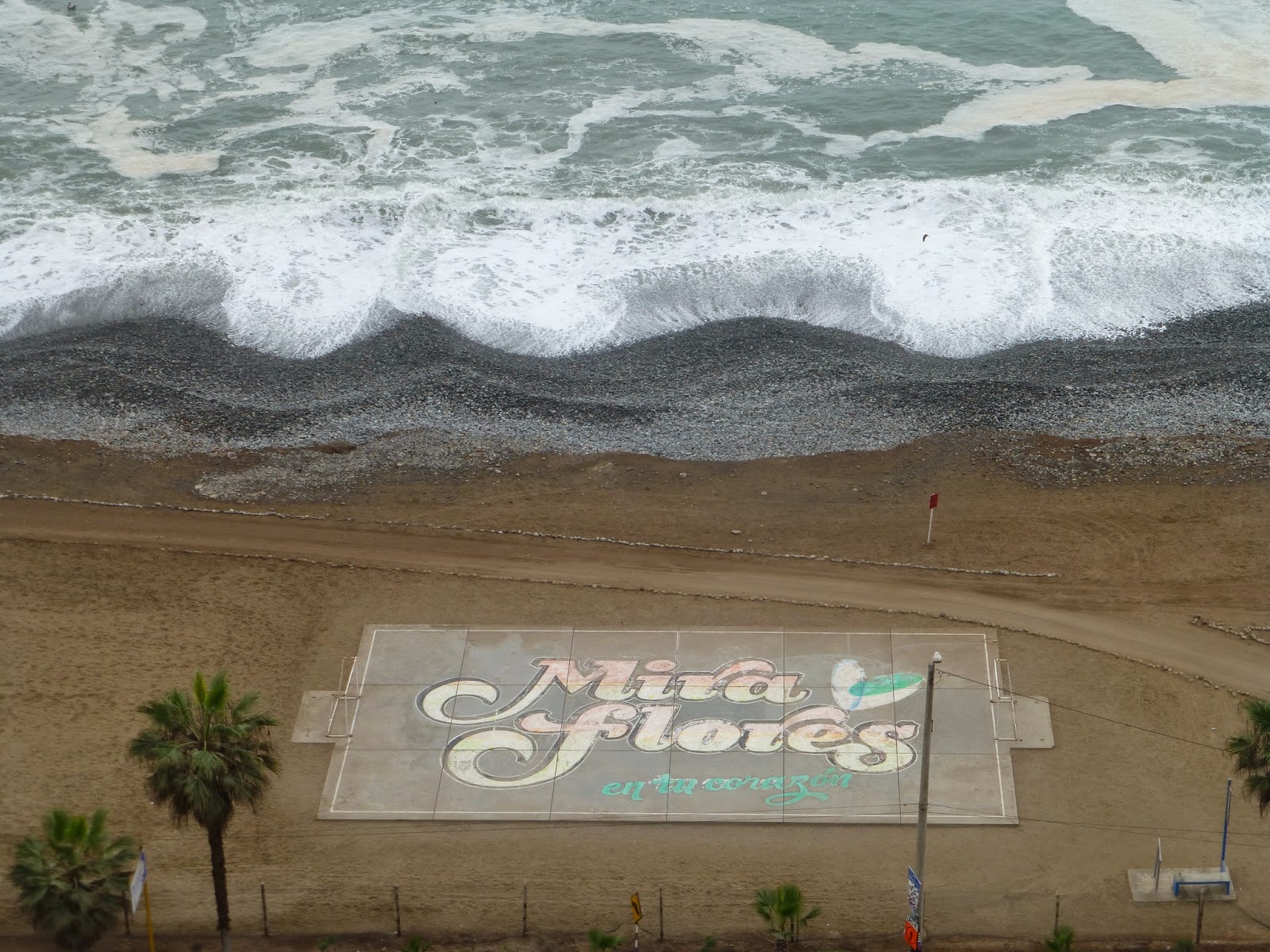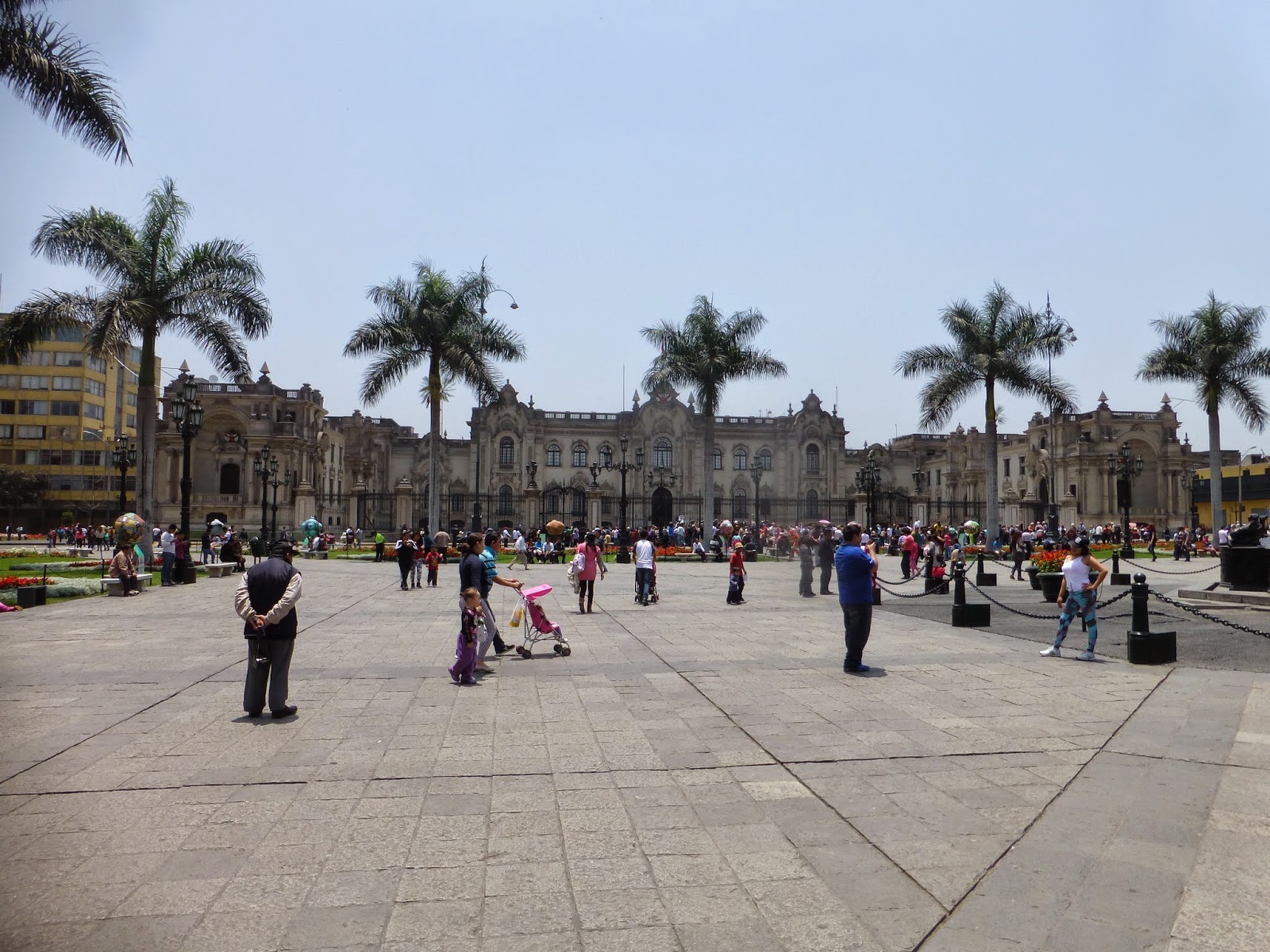Puerto Maldonado dock
The derivation of the river's name is interesting. Our guide explained that the ironwood tree, indigenous to the area, contains enough iron to disrupt a compass and that early Spanish explorers/conquerors would become lost in the rain forest. Only when they found the river would they have a chance of survival, and so it was gratefully christened "the Mother of God."
In the afternoon, we enjoyed a few chilcanos, a pisco cocktail made with lime juice and ginger ale, and took a boat ride at twilight, spotting both caimans and capybaras along the shore. In the morning, we visited isolated Lake Sandoval, a gorgeous body of water that we reached via a boat ride followed by a nearly two-mile hike along a muddy, pitted trail. It rained gently during our excursion and we welcomed the respite from the usually unrelenting tropical heat. Although we did not spot any monkeys or anacondas, we did encounter the endangered giant river otter. Later, we had the pleasure of meeting the resort's pet tapir, which was found alone in the wild as an infant and now makes its home on the grounds.
Capybara
Caiman
Creek leading to Lake Sandoval
Giant River Otters
Caiman
A highlight of the trip was the Inkaterra Canopy Walkway experience, which involved negotiating a series of suspended bridges hanging approximately seventy-five feet above the forest floor. Although we didn't spy any animals, the view of the seemingly endless sea of green was fascinating. Our day culminated with a cocktail hour on an expansive stretch of unspoiled sand to view the sunset. Not only was the sky at dusk simply stunning, but we were fortunate to also have a full moon to illuminate the night sky.
Enjoying our surroundings, with a fine cigar and a pisco cocktail
Hoping to spot an anaconda in the wild, we visited Gamitana Creek, accessible by boat from the lodge. Instead, we encountered a few caimans, one over six feet in length, and a seeming flock of a colorful, inedible bird affectionately referred to by locals as the "stinky bird." Following the creek, we toured a garden where native plants, trees, and orchids are cultivated. The visit was eye-opening, as we learned of the medicinal purposes of many species. We tasted one, used to relieve pain, and it seemed as though our mouths had been injected with Novocain. Other plants could be mixed with liquid or simply rubbed on the skin to create bright colors.
Gamitana Creek
Stinky Birds
We learned that the Brazil nut is harvested in the wild, as commercial production has not been successful. The shell of the nut is extremely hard and, our guide claimed, more people are killed each year by nuts falling from the towering tree than are killed by jaguars. The flowers of the tree can be pollinated only by a certain type of bee and is an interesting example of the fragility of life in the Amazon. As mining, farming, and logging continue to encroach on the rain forest, the risk of losing species such as the Brazil nut remains very real.
A 'walking tree'--the roots will search out water, moving the tree over time
Even with a machete, it took some effort to hack through the shell
Our rain forest adventure concluded with a night tour of the jungle. Venturing along a narrow, dirt trail, our path haphazardly lit by the narrow beams of flashlights, was an experience. Conscious of snakes and spiders--and we spotted plenty of the latter, including a tarantula--each step was one taken carefully. Every brush against a stray branch or twig conjured an image of something else. We also saw colorful frogs that exude a poison through their skin; indigenous peoples dip sharp thorns into the poison and use the barbs as darts or arrows to paralyze game. One member of our group, misunderstanding the guide's directions, darted off the path and into the brush. He returned sporting several sharp thorns protruding from his shirt. At one point, the guide has us turn off the flashlights and, with the canopy blotting out all starlight, we were immediately enveloped in pitch black.
Tarantula
Brilliant emerald frog
After a nightcap (or two) in the main lodge, we adjourned for the evening to pack and prepare for the next leg of our trip: the Sacred Valley.


































































